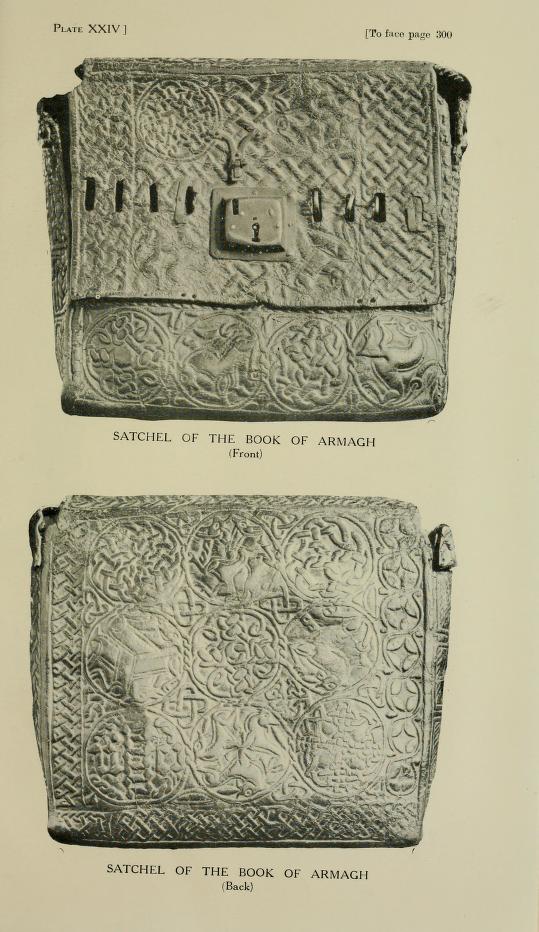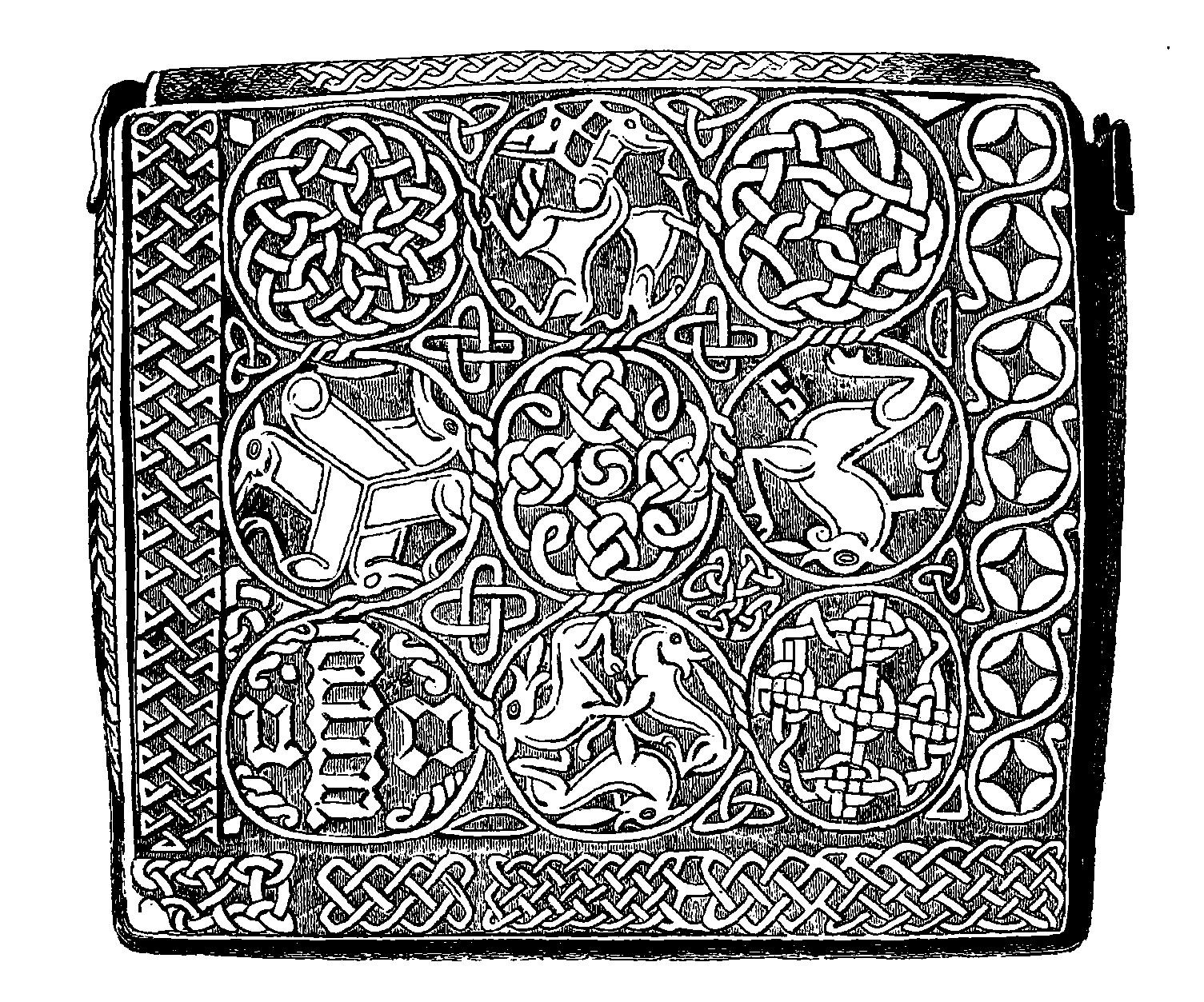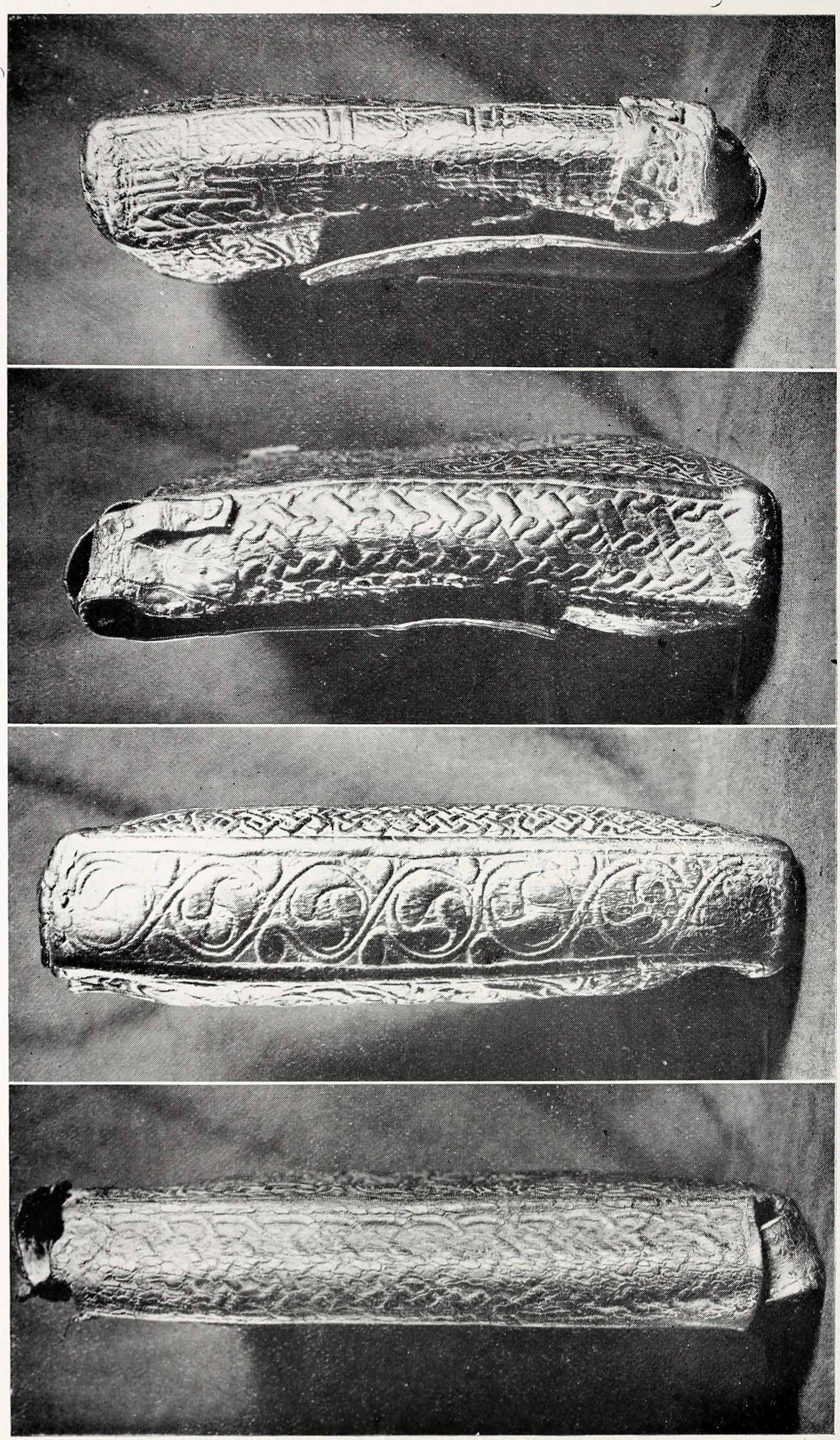What is the Book of Armagh and Why is it Significant?
The Book of Armagh, also known as the Codex Ardmachanus, is a 9th-century Irish manuscript that holds immense significance due to its contents and the historical context it represents. It is one of the earliest and most important manuscripts to survive from early medieval Ireland, containing a wealth of material related to St. Patrick, the patron saint of Ireland, as well as a complete New Testament, which is the only Irish copy to survive from that period
The manuscript is particularly renowned for containing the earliest known copy of St. Patrick's Confessio, a spiritual autobiography that provides insight into the life and mission of Ireland's foremost patron saint. However, it is notable that significant passages are omitted from this text, likely to promote St. Patrick as a highly successful missionary and the glorious founder of monasteries in Ireland without any mention of failure
The Book of Armagh was written at the behest of Torbach, the abbot of Armagh, in 807 A.D. and is attributed to the scribe Ferdomnach of Armagh, who was recognized as a scholar and an excellent scribe. The manuscript is also associated with other scribes who contributed to its creation. The craftsmanship of the Book of Armagh is evident in its precise script and ornamentation, including the symbols of the four Evangelists and the opening words of the four Gospels
Beyond its religious and historical content, the Book of Armagh was also a symbol of authority and prestige. It was one of the symbols of the office for the Archbishop of Armagh, and the custodianship of the book became a hereditary office within the MacMoyre family until the late 17th century. The manuscript was enshrined in the year 937 and was associated with significant historical figures, including Brian Boru, who is described in the manuscript as "imperator Scotorum" (emperor of the Irish)
What is the Historical Significance of the Book of Armagh?
The Book of Armagh's significance is further underscored by its association with the church of Armagh, which was acknowledged as the supreme ecclesiastical site in Ireland by King Brian Boru in 1005. This association is recorded in the manuscript itself and reflects the central role of Armagh in the religious and political landscape of medieval Ireland
In summary, the Book of Armagh is significant not only for its religious texts and the earliest copy of St. Patrick's Confessio but also as a testament to the cultural, religious, and political importance of Armagh during the early medieval period. It serves as a crucial link to Ireland's past, offering a window into the life of St. Patrick, the spread of Christianity in Ireland, and the complex interplay of church and state during this transformative era.
Who wrote the Book of Armagh?
The Book of Armagh, also known as the Codex Ardmachanus or Liber Ardmachanus, was primarily written by Ferdomnach of Armagh, a scribe who died in 845 or 846. Ferdomnach wrote the first part of the book in 807 or 808 for Torbach, the abbot of Armagh, who was also Patrick's heir (comarba). This creation was a significant effort, as the Book of Armagh is one of the earliest and most important manuscripts from early medieval Ireland, containing a wealth of material related to St. Patrick, including the earliest known copy of St. Patrick's Confessio, and a complete New Testament, the only Irish copy to survive from that period
In addition to Ferdomnach's contributions, the Book of Armagh includes texts attributed to St. Patrick himself, Sulpicius Severus, and others. It also contains one of the Lives of Patrick, written by Muirchu Maccu Machteni at the request of Aed, Bishop of Sletty, and another Life by Tirechan for Bishop Ultan of Ardbraccan. These authors, writing in the middle of the seventh century, based their works on even older memoirs, making the Book of Armagh a crucial source for the early history and civilization of Ireland
The manuscript is a transcript of documents much older than the book itself, preserving these invaluable documents for posterity. Its contents are not only of religious significance but also provide a deep insight into the early history, language, and civilization of Ireland. The Book of Armagh was highly valued in medieval Ireland, often richly bound and encased in shrines of artistic workmanship, reflecting the reverence with which it was held
What is the Content of the Book of Armagh?
The Book of Armagh, also known as the Codex Ardmachanus or Liber Ardmachanus, is a 9th-century Irish manuscript that is a significant historical and religious artifact. The content of the Book of Armagh is diverse and includes:
The New Testament: This is the only Irish copy to survive from that period and is based on the Vulgate, but it includes variations characteristic of insular texts
Prefatory Matter: This includes prefaces to Paul's Epistles, most of which are by Pelagius, the Canon Tables of Eusebius, and the Letter of Jerome to Pope Damasus
St. Patrick's Confessio: The Book of Armagh contains the earliest known copy of Saint Patrick's Confessio. However, significant passages are omitted, likely to promote St. Patrick as a successful missionary and the glorious founder of monasteries in Ireland without any mention of failure
.Life of St. Martin: The manuscript closes with the Life of St. Martin of Tours by Sulpicius Severus
Patrician Documents: These include texts attributed to St. Patrick himself, Sulpicius Severus, and others. The Book of Armagh also contains one of the Lives of Patrick, written by Muirchu Maccu Machteni, and another Life by Tirechan
Liber Angeli: Also known as the "Book of the Angel," this text represents an angel entrusting to St. Patrick the primatial rights of Armagh
Irish Language: The Irish of the Book of Armagh is of great importance for the history of the Irish language, representing the language of the end of the 7th or the beginning of the 8th century
The Book of Armagh is not only a religious text but also a crucial source for the early history, language, and civilization of Ireland. It was written primarily by Ferdomnach of Armagh, with contributions from other scribes, and was highly valued in medieval Ireland, often richly bound and encased in shrines
What is the Confessio and Why is it Significant in the Book of Armagh?
The Confessio, or "Confession," is a significant text within the Book of Armagh. It is a spiritual autobiography written by St. Patrick, the patron saint of Ireland. In this work, St. Patrick describes his life, including his upbringing in a Roman villa in Britain, his capture by Irish raiders, and his subsequent slavery in Ireland. The Confessio is also notable for its omissions, as significant passages are deliberately left out, likely to present St. Patrick as a highly successful missionary and the glorious founder of monasteries in Ireland without any mention of failure
.The Confessio holds historical and religious importance as it provides insights into St. Patrick's personal experiences, his spiritual journey, and the challenges he faced. It is one of the earliest and most valuable documents for understanding the life and mission of St. Patrick, making it a crucial part of the Book of Armagh and an essential source for the early history and civilization of Ireland
What are some Other Famous Missals from Ireland?
Ireland's rich tradition of illuminated manuscripts and missals from the medieval period is a treasure trove of art, history, and spirituality. Here's a list of some of the most famous Irish missals and manuscripts, each a masterpiece of Insular art and a window into the past:
The Book of Kells: The crown jewel of Insular art, this 9th-century Gospel book is celebrated for its exquisite decoration. It's housed at Trinity College Library in Dublin.
The Book of Durrow: A pioneering fully decorated Gospel book from the 7th century, known for its intricate designs and symbolism.
The Book of Armagh: A 9th-century manuscript rich with material on St. Patrick, including the earliest known copy of his Confessio.
The Book of Mulling: An 8th-century manuscript featuring the four Gospels and known for its intricate carpet pages.
The Lichfield Gospels: Also known as the St. Chad Gospels, this 8th-century manuscript is linked to the Irish missionary St. Chad of Mercia.
Leabhar na hUidhre (Book of the Dun Cow): The oldest surviving manuscript with literature written in Irish, containing the earliest versions of famous Irish sagas.
The Book of Ballymote: A 14th-century manuscript with a variety of texts including genealogies, sagas, and law tracts.
The Stowe Missal: A sacramentary rather than a true missal, this small illuminated manuscript was written mainly in Latin with some Old Irish in the late 8th or early 9th century. It was later annotated and some pages rewritten at Lorrha Monastery in County Tipperary. The Stowe Missal is significant for its inclusion of the Mass of the early Irish Church, making it a vital document for understanding the liturgical practices of the time.
The Stowe Missal, also known as the Lorrha Missal, is particularly notable for its Mass-book, which was small enough to be carried around by a priest on his travels, suggesting its use in a more itinerant context. It may have been written in Tallaght, Co. Dublin, and later found its way to the monastery of St. Ruadhan in Lorrha, Co. Tipperary. The manuscript was named 'Stowe' after being part of the Stowe manuscripts collection formed by the 1st Marquess of Buckingham at Stowe House. It is now housed in the Royal Irish Academy in Dublin
These manuscripts are not just religious texts but also works of art that showcase the devotion and skill of Irish monks. They hold immense historical value and provide insight into the religious and cultural life of medieval Ireland.
What is the History of the Book of Armagh Satchel
The history of the Armagh satchel is intertwined with the Book of Armagh, a significant Irish manuscript dating back to the 9th century. The satchel itself, however, is believed to have been crafted in the 15th century, serving as a protective case for this revered text
The Book of Armagh contains important religious texts, including those related to St. Patrick, and was written at the behest of Torbach, the abbot of Armagh, in 807 A.D.
The satchel is a remarkable example of medieval Irish leatherworking skill. It was made from a single piece of thick cowhide using a technique known as cuir-bouilli, which involved saturating and shaping the leather over a form, possibly using damp sand
The embossed patterns on the satchel are reflective of early Irish artistic traditions, featuring intricate interlace designs, zoomorphic motifs, and crosses, all of which symbolize the fusion of Irish culture and Christian faith
Throughout its history, the satchel has been associated with the high status of the Book of Armagh. In medieval Ireland, the manuscript was highly valued, and the satchel's creation would have been a testament to this reverence. The satchel not only functioned as a container but also as a symbol of the importance of the texts it held
The satchel's later additions, such as a brass lock and loops for securing a rod to lock the flap, were not part of the original design but were added to enhance its functionality and aesthetic appeal
The satchel's history is also marked by its custodianship, which became a hereditary office within the MacMoyre family until the late 17th century. Eventually, the satchel, along with the Book of Armagh, came into the possession of the Brownlow family before being deposited in the library of the Royal Irish Academy and later donated to the Library of Trinity College Dublin
In summary, the Armagh satchel is a historical artifact that not only served a practical purpose in protecting a significant manuscript but also stands as a piece of art reflecting the rich cultural and religious heritage of medieval Ireland.




